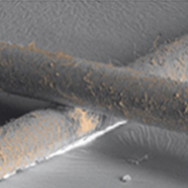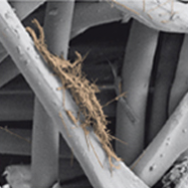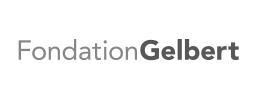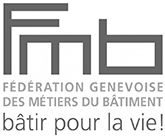ABOUT THIS WEBSITE
This website has been created by FMB in partnership with the Gelbert Foundation and the State of Geneva. It is aimed at anybody planning renovation or demolition work, on a small or large scale.
Some of the materials used in construction over the last 100 years have introduced substances that are toxic for humans and the environment. Three of them—asbestos, PCB (polychlorinated biphenyls) and lead, which are prohibited in Switzerland—are still present in properties in Geneva.
The risks of exposure are limited during the normal use of a building, i.e. when you live or stay in a building that may contain these substances. However, when you are planning work on materials that may contain asbestos, PCB or lead, it is essential that renovations or demolitions are carried out according to the rules to avoid any harm to health or the environment.
Whether you are a builder or architect, property manager or owner, engineer or private individual, this website will provide you with all the information that you need in order to renovate, transform or carry out demolition work safely.
- If the parts of the building affected by the works date from before 1991, you need to check if they contain asbestos or PCB. This investigation is mandatory, regardless of whether the worksite requires planning permission. A qualified expert identifies materials that may contain asbestos and takes samples that will be analysed in a laboratory. (List of asbestos inspectors). (liste diagnostiqueurs amiante).The expert issues a report that indicates the location of any asbestos and PCB.
- If the works are subject to planning permission, you must report the conclusions of the diagnosis in a statement of hazardous substances (attestation substances dangereuses); this document must be attached to the application for planning permission.
Checkthe guide for preparing the statement of hazardous substances as defined by art. 15A of the LaLPE (Environmental regulations) (K 1.70),the Directive for the detection of asbestos before works (Directive diagnostic amiante avant travaux) et and the Directive for the detection of PCB before work (Directive diagnostic PCB avant travaux).
- If the parts affected by the works date from after 1991, there is no need to perform an asbestos diagnosis.
- Before carrying out any work on paintwork that dates from before 2006, you need to ensure that it does not contain lead: a specialist can carry out a diagnosis of the paint on site, or a flake of the paint can be sent to a laboratory for analysis.
- If the diagnosis before works confirms the presence of asbestos, it must be removed by a specialist company (list of asbestos removers),before you begin the works. This does not apply to undamaged asbestos cement that can be removed by a standard company, with certain precautions (pursuant to the instruction issued by SUVA).
Consult the booklet «Ce qu’il faut savoir pour rénover dans les règles», p. 11, the Federal directive on asbestos (Directive fédérale sur l’amiante), art. 5 to 8 et and the Directive on making materials containing asbestos safe (Directive assainissement de matériaux contenant de l'amiante)
- Ensure that no work is carried out on materials containing asbestos before they have been made safe.
- Inform all of the companies that these works will be performed before they commence work.
- If PCB is present, ensure that the contracted company is able to use appropriate working methods and provide them with the diagnosis so that they have the information they need to identify the elements to be manipulated in an appropriate manner and to dispose of it as hazardous waste.
Consult the STEB Directive on making materials containing PCB safe and the booklet "Ce qu'il faut savoir pour rénover dans les règles" (pp. 6-7), and the information sheet on worksite waste, p. 6-7), la fiche d'information sur les déchets de chantier.
- If lead is present, take the necessary precautions during the works to avoid creating any dust.
- If the pre-works diagnosis shows that there are no hazardous substances, you can start the work..
- Work can begin as soon as the area to be renovated, transformed or demolished no longer contains any hazardous substances.
- After the asbestos has been removed, an expert must be appointed to check the work and measure the asbestos fibres in the air before the confinement can be lifted
- If this is not the case, return to the "Before opening the worksite" stage".
- If the parts of the building affected by the works date fromt before 1991, the owner must check or have checks carried out to verify if they contain asbestos or PCB. This investigation is mandatory, regardless of whether the worksite requires planning permission. A qualified expert takes samples that will be analysed in a laboratory (list of asbestos inspectors).
- If the works are subject to planning permission, the conclusions of the diagnosis must be reported in a statement of hazardous substances . Check the guide for preparing the statement of hazardous substances as defined by art. 15A of the LaLPE (Environmental regulations) (K 1.70)..
- If the parts affected by the works date from after 1991 , there is no need to perform an asbestos diagnosis.
- Before carrying out any work on paintwork that dates from before 2006, you need to ensure that it does not contain lead: a specialist can carry out a diagnosis of the paint on site, or a flake of the paint can be sent to a laboratory for analysis.
- If the diagnosis before works confirms the presence of asbestos, it must be removed by a specialist company (list of asbestos removers),before you begin the works. This does not apply to undamaged asbestos cement that can be removed by a standard company, with certain precautions (pursuant to the instruction issued by SUVA).
Consult the booklet «Ce qu’il faut savoir pour rénover dans les règles», p. 11, the Federal directive on asbestos (Directive fédérale sur l’amiante), art. 5 to 8 et and the Directive on making materials containing asbestos safe (Directive assainissement de matériaux contenant de l'amiante)
- Ensure that no work is carried out on materials containing asbestos before they have been made safe.
- Inform all of the companies that these works will be performed before they commence work.
- If PCB is present, ensure that the contracted company is able to use appropriate working methods and provide them with the diagnosis so that they have the information they need to identify the elements to be manipulated in an appropriate manner and to dispose of it as hazardous waste.
Consult the STEB Directive on making materials containing PCB safe and the booklet "Ce qu'il faut savoir pour rénover dans les règles" (pp. 6-7), and the information sheet on worksite waste, p. 6-7), la fiche d'information sur les déchets de chantier.
- If lead is present, take the necessary precautions during the works to avoid creating any dust.
- If the pre-works diagnosis shows that there are no hazardous substances, you can start the work..
- Work can begin as soon as the area to be renovated, transformed or demolished no longer contains any hazardous substances.
- After the asbestos has been removed, an expert must be appointed to check the work and measure the asbestos fibres in the air before the confinement can be lifted
- If this is not the case, return to the "Before opening the worksite" stage".
- If the parts of the building affected by the works date fromt before 1991, the owner must check or have checks carried out to verify if they contain asbestos or PCB. This investigation is mandatory, regardless of whether the worksite requires planning permission. A qualified expert takes samples that will be analysed in a laboratory (list of asbestos inspectors).
- If the works are subject to planning permission, the conclusions of the diagnosis must be reported in a statement of hazardous substances . Check the guide for preparing the statement of hazardous substances as defined by art. 15A of the LaLPE (Environmental regulations) (K 1.70)..
- If the parts affected by the works date from after 1991 , there is no need to perform an asbestos diagnosis.
- Before carrying out any work on paintwork that dates from before 2006, you need to ensure that it does not contain lead: a specialist can carry out a diagnosis of the paint on site, or a flake of the paint can be sent to a laboratory for analysis.
- If the diagnosis before works confirms the presence of asbestos, it must be removed by a specialist company (list of asbestos removers),before you begin the works. This does not apply to undamaged asbestos cement that can be removed by a standard company, with certain precautions (pursuant to the instruction issued by SUVA).
Consult the booklet «Ce qu’il faut savoir pour rénover dans les règles», p. 11, the Federal directive on asbestos (Directive fédérale sur l’amiante), art. 5 to 8 et and the Directive on making materials containing asbestos safe (Directive assainissement de matériaux contenant de l'amiante)
- Ensure that no work is carried out on materials containing asbestos before they have been made safe.
- Inform all of the companies that these works will be performed before they commence work.
- If PCB is present, ensure that the contracted company is able to use appropriate working methods and provide them with the diagnosis so that they have the information they need to identify the elements to be manipulated in an appropriate manner and to dispose of it as hazardous waste.
Consult the STEB Directive on making materials containing PCB safe and the booklet "Ce qu'il faut savoir pour rénover dans les règles" (pp. 6-7), and the information sheet on worksite waste, p. 6-7), la fiche d'information sur les déchets de chantier.
- If lead is present, take the necessary precautions during the works to avoid creating any dust.
- If the pre-works diagnosis shows that there are no hazardous substances, you can start the work..
- Après que l'entreprise spécialisée ait terminé le désamiantage, retiré le confinement confirmé qu'il n'y avait plus d'amiante dans la zone de travaux.
- Si ce n'est pas le cas, je retourne à l'étape "Avant de démarrer un chantier".
- If the parts of the building on which you must work date from before 1991, ask the owner or their representative for the asbestos and PCB diagnosis to check that the materials you will be working on do not contain asbestos or PCB. If there is no diagnosis, inform the owner that this stage is mandatory before starting work.
- If the parts of the building on which you will be working date from after1991, you can consider that they do not contain asbestos or PCB.
- Before carrying out any work on paintwork dating from before 2006, check with the owner that they do not contain any lead. In case of doubt, apply the necessary precautions for working on paint containing lead.
- Check the directive from the Built Environment Toxicology Department regarding detecting lead prior to works..
- If the pre-work diagnosis confirms the presence of hazardous substances: check that these substances have been removed by a specialist company (list of asbestos removerss) before starting any work activity. Do not perform any work before you have received this confirmation.
If undamaged asbestos cement is present, remove it according to the rules in force.
Consult the booklet " Ce qu’il faut faire pour rénover dans les règles " (Everything you need to know to renovate according to the rules), p. 11 », and the Federal directive on asbestos (Directive fédérale sur l’amiante), art. 5 to 8..
- If PCB is present, remove it according to the rules in force (Federal and Cantonal directives + KBOB—Federal Coordination Unit for Construction and Property).
ConsultSTEB Directive on making materials containing PCB , the booklet Ce qu'il faut savoir pour rénover dans les règles, p. 6-7), ), and the information sheet on worksite waste..
- If lead is present, take the necessary precautions during the works to avoid spreading any dust.
- The conclusions of the asbestos or PCB diagnosis can be obtained from the owner or their representative.
- Work can begin as soon as the area to be renovated, transformed or demolished no longer contains any hazardous substances.
- After the asbestos has been removed, an expert must be appointed to check the work and measure the asbestos fibres in the air before the confinement can be lifted
- If this is not the case, return to the "Before opening the worksite" stage".
- If the parts of the building on which you must work date from before 1991, ask your company manager, the architect or the owner for the results of the asbestos and PCB diagnosis.
- If the parts of the building on which you will be working date from after 1991, you can carry out the work.
- Before any works (sanding, matting, scraping, etc.) on paint dating from before 2006, ask your company manager, the architect or the owner for the results of the lead diagnosis. In case of doubt, apply the necessary precautions for working on paint containing lead.
- Check the directive from the Built Environment Toxicology Department regarding detecting lead prior to works.In case of doubt, ask your site manager for information.
- If the pre-works diagnosis confirms the presence of asbestos: do not touch the areas in question before a specialist company has removed the asbestos.
If undamaged asbestos cement is present, remove it without breaking it according to the rules in force.
Consult the booklet la brochure « Ce qu’il faut faire pour rénover dans les règles »,(Everything you need to know to renovate according to the rules), p. 11 and the Federal directive on asbestos (Directive fédérale sur l’amiante), art. 5 to 8..
- If PCB is present, remove it according to the rules in force (Federal and Cantonal directives + KBOB—Federal Coordination Unit for Construction and Property).
- Consultthe STEB Directive on making materials containing PCB , the bookletCe qu'il faut savoir pour rénover dans les règles, p. 6-7), and the information sheet on worksite waste.
- If lead is present, take the necessary precautions during the works to avoid spreading any dust.
- Work can begin as soon as the area to be renovated, transformed or demolished no longer contains any hazardous substances.
- After the asbestos has been removed, an expert must be appointed to check the work and measure the asbestos fibres in the air before the confinement can be lifted
- If this is not the case, return to the "Before opening the worksite" stage".
N.b.
INFORMATION OUT THERE
Professionals are available to assist you and answer any questions you may have so that you can carry out renovations safely. They move around the Canton free of charge in a special mobile unit that they will adapt to your subject:
- examples of materials
- case studies
- general procedures
The "Pour des travaux sans danger" (Work safely) mobile unit is available on request (by reservation) or during public events:
Options available:
- Customised sessions (1 hr. 15 approx.) with a professional presenter
- Public exhibition
Information sessions by reservation on 022 546 76 00. .
Listen to interviews with specialists:
1. A summary of the issue
2. Where to look for the substances
3. The dangers
4. The pre-works diagnosis (audio audio)
5. Making worksites safe and inspecting them












